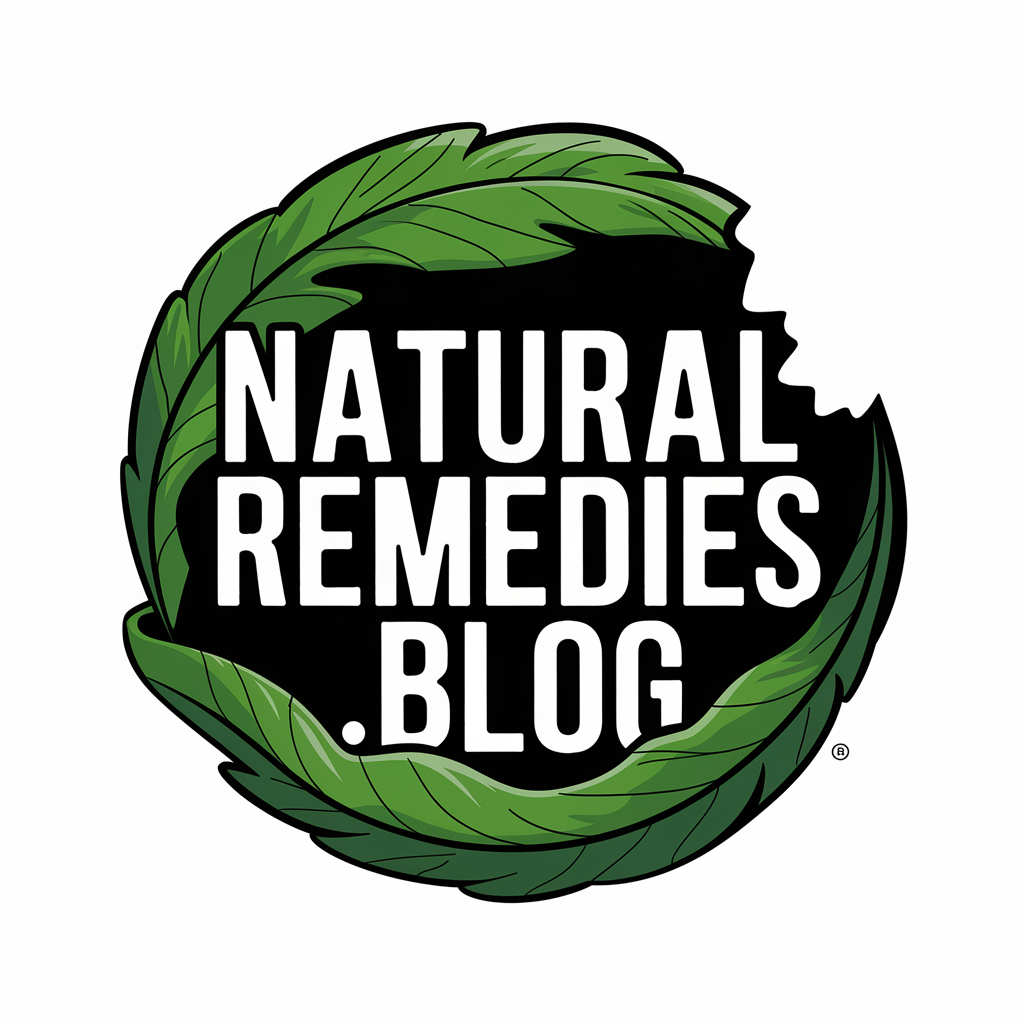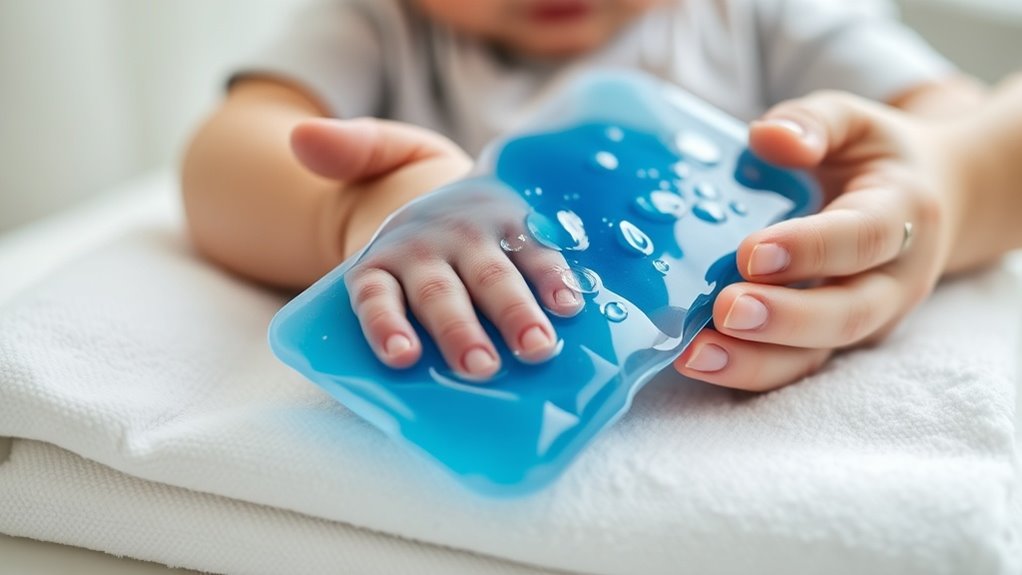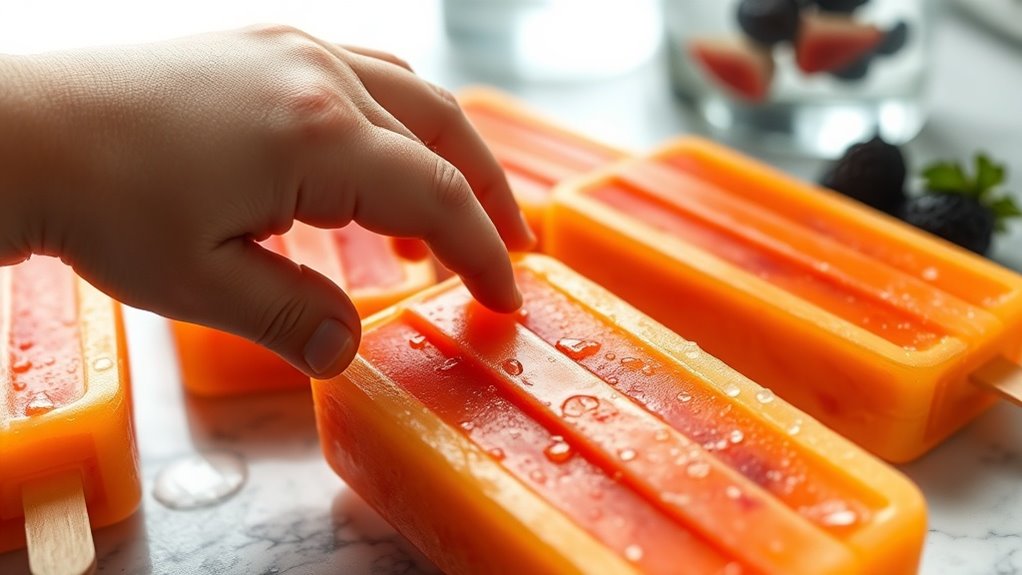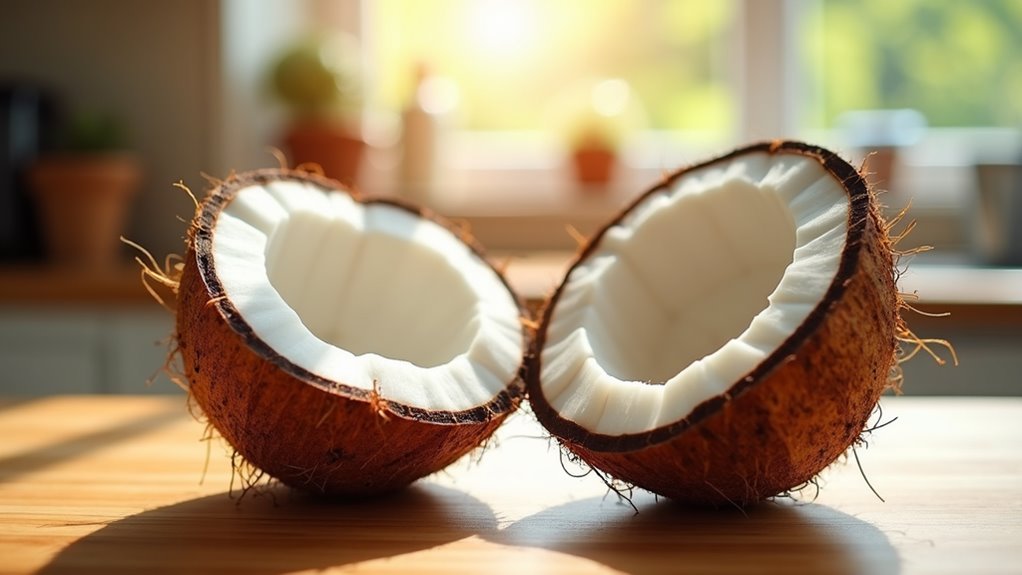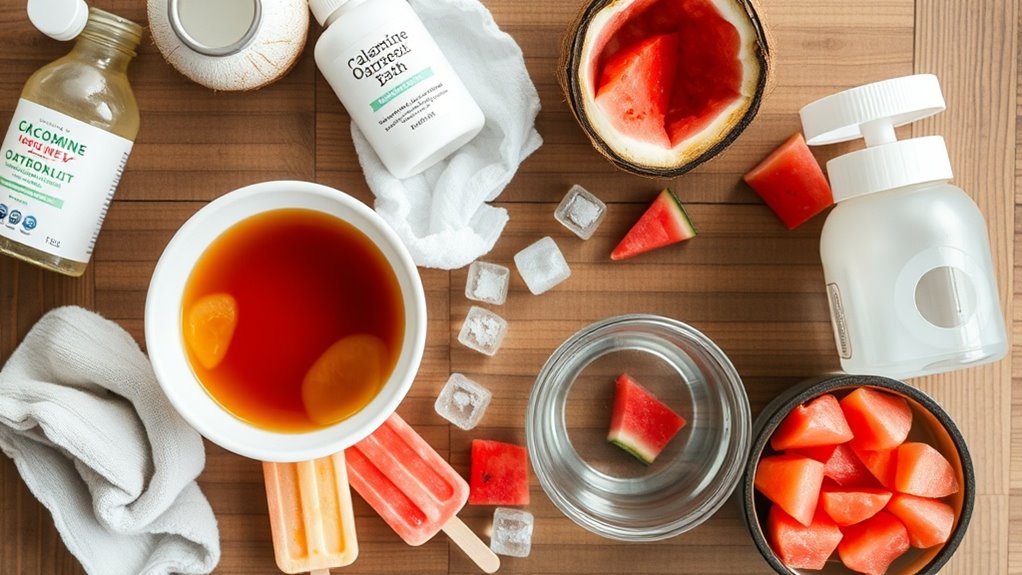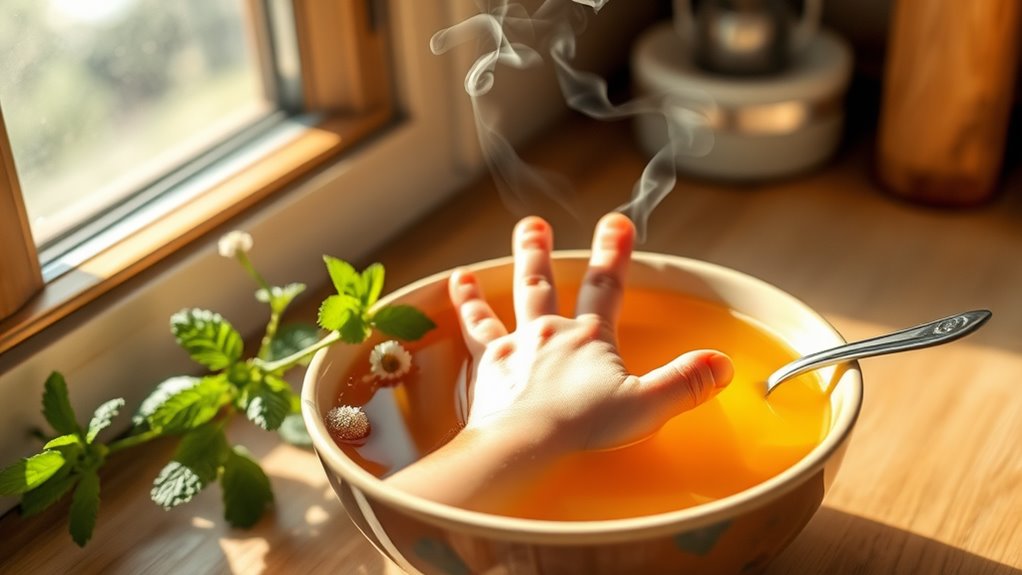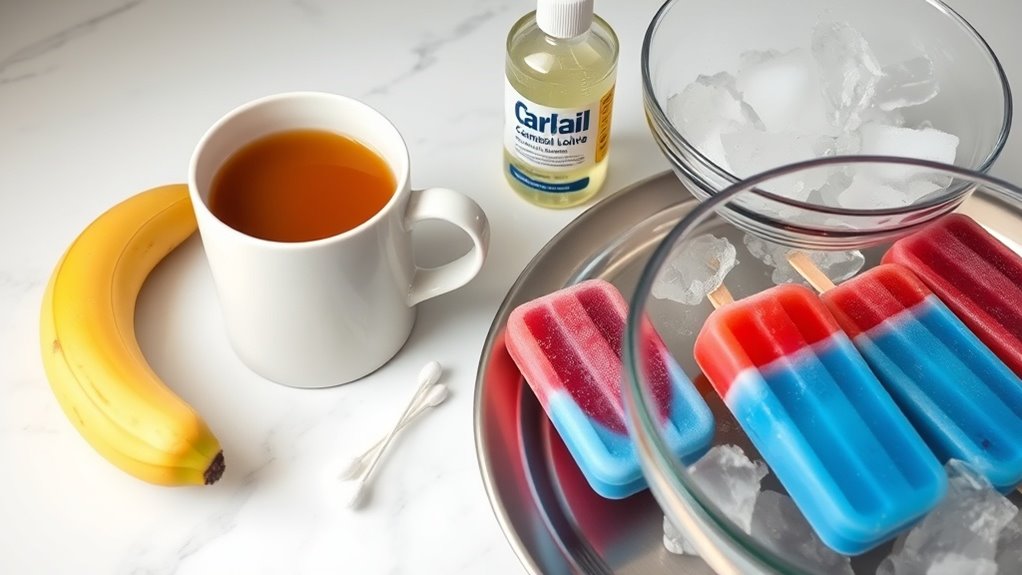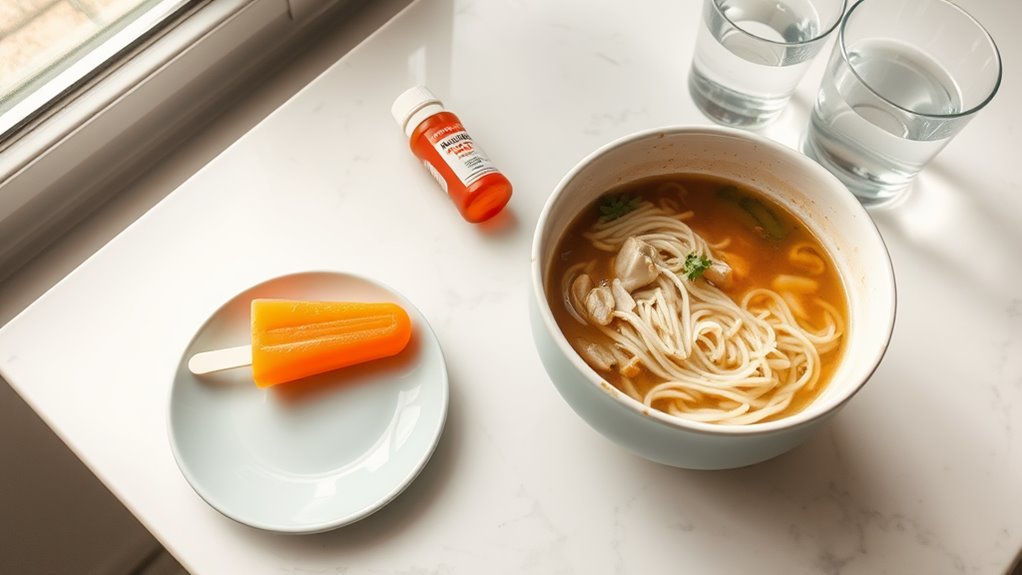What Are 8 Hand Foot and Mouth Disease Remedies for Comfort.
Looking for ways to ease the painful symptoms of hand, foot, and mouth disease? This viral infection causes uncomfortable blisters in the mouth, on hands and feet, along with fever and sore throat that can make eating, drinking, and daily activities miserable. While there’s no cure for the virus itself, the good news is that targeted home remedies can significantly reduce your discomfort and help you get through the 7-10 day recovery period more comfortably. Most cases are mild and self-limiting, but managing symptoms properly makes a real difference in how you feel day-to-day. You’ll discover evidence-based strategies to soothe mouth pain, reduce inflammation, stay hydrated, and support your body’s healing process. Let’s break down what’s really happening and which remedies actually work.
Cool Compress Therapy for Reducing Pain and Inflammation
Cool compresses provide immediate relief for the painful mouth sores and skin lesions characteristic of hand, foot, and mouth disease. You’ll find that applying a clean, cold washcloth to affected areas reduces inflammation and numbs discomfort effectively. For oral lesions, you can use ice chips or cold beverages to soothe pain temporarily.
When implementing this hand foot and mouth disease remedy, apply compresses for 10-15 minutes every few hours. You shouldn’t use ice directly on skin, as this can cause tissue damage. Instead, wrap ice packs in a thin towel.
This therapy works by constricting blood vessels, which decreases swelling and slows nerve conduction that transmits pain signals. You’ll notice the most benefit when you combine cool compress therapy with other hand foot and mouth disease remedies. Additionally, lukewarm baths with colloidal oatmeal can complement cold compress therapy by providing gentle relief for widespread skin rashes.
Honey-Chamomile Mouth Rinse for Soothing Oral Lesions
Combining honey’s antimicrobial properties with chamomile’s anti-inflammatory compounds creates an effective mouth rinse that addresses the painful oral lesions associated with hand, foot, and mouth disease. You’ll prepare this rinse by steeping one chamomile tea bag in hot water for five minutes, letting it cool to lukewarm temperature, then adding one tablespoon of raw honey.
Swish the mixture gently in your mouth for 30 seconds, focusing on affected areas, then spit it out. You can repeat this process three to four times daily, particularly after meals. The honey creates a protective coating over lesions while inhibiting bacterial growth, and chamomile reduces inflammation and discomfort. This remedy works well alongside over-the-counter pain relievers like acetaminophen or ibuprofen for comprehensive symptom management. Don’t use this remedy for children under one year due to botulism risk from honey.
Oatmeal Baths for Relieving Skin Irritation and Itching
Colloidal oatmeal baths provide substantial relief from the vesicular rash and itching that accompany hand, foot, and mouth disease by forming a protective barrier on irritated skin. The anti-inflammatory properties of oatmeal’s avenanthramides reduce redness and discomfort while moisturizing compromised skin.
You’ll need to grind plain, unflavored oatmeal into a fine powder or purchase colloidal oatmeal specifically formulated for bathing. Add one cup to lukewarm water and soak for 15-20 minutes, ensuring affected areas remain submerged. Don’t use hot water, as it’ll worsen irritation.
Pat your skin dry gently afterward—avoid rubbing. You can repeat this treatment twice daily during the acute phase. The bath also helps prevent secondary bacterial infections by cleansing lesions without harsh chemicals or aggressive scrubbing that damages delicate skin. For best results, limit bath time to 10 minutes to prevent skin drying, which can worsen the discomfort associated with HFMD lesions.
Coconut Oil Pulling for Oral Hygiene and Comfort
Oil pulling with coconut oil can provide temporary relief from oral discomfort caused by hand, foot, and mouth disease. This ancient practice involves swishing oil in your mouth for several minutes, which helps reduce bacteria and creates a protective coating over painful mouth sores.
Coconut oil’s natural antimicrobial and anti-inflammatory properties make it particularly effective, though you’ll need to ensure your child is old enough to swish without swallowing. The lauric acid in coconut oil targets harmful bacteria like Streptococcus mutans, which can help maintain a healthier oral environment during recovery.
How Oil Pulling Works
When you swish coconut oil in your mouth for 10-20 minutes, it mechanically dislodges bacteria and debris from teeth, gums, and oral tissues. The lipids in coconut oil bind to bacterial cell membranes, effectively trapping microorganisms that contribute to oral discomfort and inflammation. This process reduces the bacterial load in your mouth without harsh chemicals or irritating ingredients.
Coconut oil’s lauric acid provides antimicrobial properties that target Streptococcus mutans and other pathogens commonly present in HFMD lesions. The emulsification process transforms the oil into a thin, milky substance that penetrates hard-to-reach areas where painful blisters develop. You’ll find this gentle cleansing method particularly beneficial when traditional brushing aggravates sensitive oral sores. The coating effect also provides temporary moisture to inflamed tissues, offering brief relief from burning sensations.
Coconut Oil’s Soothing Properties
Beyond its mechanical cleansing action, coconut oil creates a protective barrier over HFMD lesions that reduces pain intensity and thermal sensitivity. You’ll find relief as the oil’s medium-chain fatty acids, particularly lauric acid, provide antimicrobial effects against viral particles while coating damaged oral tissues.
The oil’s lipid composition allows it to adhere to mucosal surfaces longer than water-based rinses, extending its protective benefits. You can expect decreased discomfort when eating or drinking, as the barrier shields exposed nerve endings from temperature changes and acidic foods.
Clinical observations suggest that coconut oil’s anti-inflammatory properties may help reduce lesion swelling and redness. When you’re pulling with coconut oil, you’re simultaneously cleansing, protecting, and soothing oral tissues—making it a multifunctional approach to managing HFMD’s painful mouth sores.
Safe Practice for Children
Children under age five shouldn’t attempt traditional oil pulling due to choking and aspiration risks, but you can modify the technique for safe use during HFMD episodes. Instead of swishing, apply coconut oil directly to painful oral lesions using a clean cotton swab or your finger.
Safe application methods include:
- Dabbing technique – Gently apply a small amount of coconut oil to visible mouth sores three to four times daily, especially before meals and bedtime
- Frozen application – Freeze coconut oil in small portions and allow brief contact with lesions for numbing relief
- Parental supervision – Always monitor children during application and ensure they don’t ingest large quantities at once
This modified approach provides coconut oil’s antimicrobial benefits without swallowing risks.
Aloe Vera Gel Application for Healing Blisters and Sores
Aloe vera gel offers natural anti-inflammatory and antimicrobial properties that can accelerate the healing of hand, foot, and mouth disease blisters. You’ll want to use pure aloe vera gel—either directly from the plant or a high-quality commercial product without added fragrances or alcohol.
Apply a thin layer to clean, dry blisters three times daily. The gel creates a protective barrier while delivering vitamins C and E to damaged tissue. You’ll notice it soothes pain and reduces redness within hours of application.
Before widespread use, test the gel on a small skin area to check for sensitivity. If your child’s under two years old, consult your pediatrician first. Store the gel in your refrigerator for an additional cooling effect that provides extra relief. For additional soothing relief, you can also create a cucumber and chamomile spray that complements the aloe vera treatment for irritated skin on hands and feet.
Saltwater Gargle for Cleansing and Pain Relief
While topical treatments address external blisters, mouth sores require internal care for effective relief. Saltwater gargling provides both cleansing and pain management for oral lesions caused by hand, foot, and mouth disease. This simple solution reduces bacterial load while temporarily numbing painful areas.
Saltwater Gargle Protocol:
-
Mix ¼ teaspoon salt in 8 ounces warm water – This concentration creates an isotonic solution that won’t irritate tissues while maintaining antimicrobial properties.
-
Gargle for 30 seconds, four times daily – Rinse after meals and before bed to maintain oral hygiene and prevent secondary infections.
-
Supervise children over age 6 – Younger children can’t safely gargle; instead, apply saltwater gently with a cotton swab to visible mouth sores.
You’ll notice reduced inflammation and improved comfort within 24-48 hours of consistent use. Similar to how warm compresses effectively relieve earaches in adults, saltwater gargles work by reducing inflammation and providing soothing relief to affected tissues.
Probiotics Supplementation for Immune System Support
Beyond topical interventions, supporting your body’s internal defenses accelerates recovery from hand, foot, and mouth disease. Probiotics strengthen your immune response by enhancing gut microbiome diversity, which research shows correlates with improved viral clearance. Studies demonstrate that specific strains like Lactobacillus rhamnosus GG and Bifidobacterium lactis reduce symptom duration and severity in enteroviral infections.
You’ll find probiotics most effective when taken at the illness’s onset. Administering 1-10 billion CFUs daily through supplements or fermented foods like yogurt and kefir provides therapeutic benefit. These beneficial bacteria modulate inflammatory responses and support antibody production, helping your immune system combat the coxsackievirus more efficiently.
Continue probiotic supplementation throughout your recovery period and for two weeks afterward. This approach reinforces immune memory and reduces reinfection risk while restoring any gut flora disruption caused by the illness.
Hydrating Popsicles for Nutrition and Throat Comfort
Frozen treats serve dual therapeutic purposes when painful mouth sores make eating and drinking difficult. Popsicles numb irritated tissues while delivering essential fluids and calories your body needs during illness. You’ll find they’re particularly valuable when children refuse other foods and beverages.
Effective Popsicle Options:
-
Electrolyte-based popsicles replenish sodium and potassium lost through fever and reduced intake, supporting hydration status more effectively than water alone.
-
Fruit puree popsicles provide vitamins and natural sugars for energy without requiring chewing, though you should avoid citrus varieties that may sting lesions.
-
Milk-based frozen treats offer protein and fat-soluble vitamins, creating a protective coating over mouth sores while contributing to caloric requirements.
Serve popsicles frequently throughout the day, monitoring urine output to ensure adequate hydration.
Frequently Asked Questions
How Long Does Hand Foot and Mouth Disease Typically Last?
Hand, foot, and mouth disease typically lasts 7-10 days in most cases. You’ll notice symptoms peak within the first few days, then gradually improve. Fever usually resolves within 3-5 days, while mouth sores and rash clear up shortly after.
Is Hand Foot and Mouth Disease Contagious to Adults?
Yes, you can contract hand, foot, and mouth disease as an adult, though it’s less common. Adults typically have milder symptoms or remain asymptomatic. You’re contagious through respiratory droplets, saliva, and contact with blisters or stool.
When Should I Take My Child to the Doctor?
You should take your child to the doctor if they’re refusing fluids, showing signs of dehydration, having difficulty breathing, experiencing severe headaches, or if symptoms worsen after three days. Seek immediate care for neck stiffness or confusion.
Can Hand Foot and Mouth Disease Occur More Than Once?
Yes, your child can get hand, foot, and mouth disease multiple times. Different strains of enteroviruses cause the illness, so previous infection doesn’t provide complete immunity against all varieties. Reinfection is common, especially in childcare settings.
What Foods Should Be Avoided During Hand Foot and Mouth Disease?
You’ll want to avoid spicy, salty, acidic, or crunchy foods that can irritate mouth sores. Skip citrus fruits, tomatoes, chips, and hot foods. Instead, choose soft, bland, cool foods like yogurt, smoothies, and mashed potatoes for comfort.
